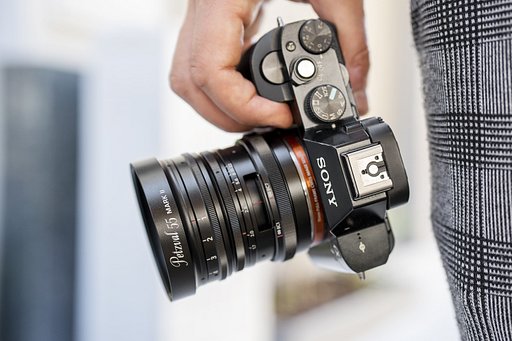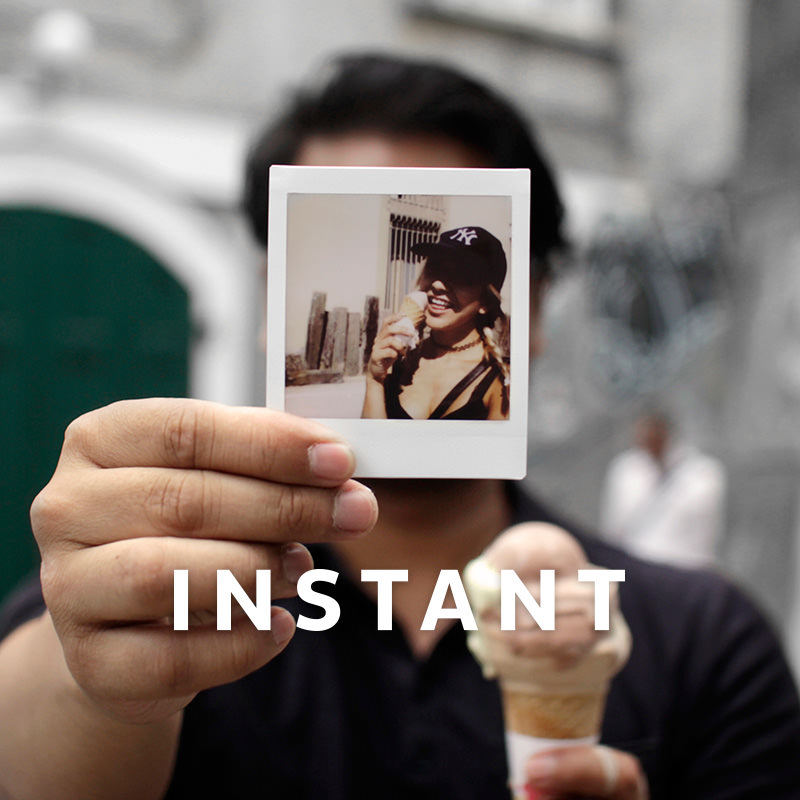Svalbard and The Faroe Islands on Lomography Color Negative 800 (120) by Bryan Kong
1 6A question for everyone who shoots on film: how far would you take your analogue practice? Is it 50 meters underwater or 1600+ meters up in the air? Battling sub-zero temperatures in the winter time or the tumultuous desert heat? For restauranteur, entrepreneur, photographer, and artist Bryan Kong, it’s to the Arctic Circle.
In March 2024, Bryan and his wife, Maxine, embarked on an arctic expedition to the northernmost town in the world found in Svalbard called Longyearbyen, followed by an adventure to the Faroe Islands, traversing through the North and Norwegian seas.
Frequently rotating between 35 mm and the 120 format, Bryan has been exploring and experimenting with the medium of film photography since 2015. His film photos range from street, landscapes, and travel photography, to the occasional portraiture and food photographs. Framing images that give an ode to the wonders of the world (see his film photos taken in Iceland, Croatia, Philippines) combined with the allure of the mundanity in everyday life (see his film photos taken in Korea, Slovenia, Italy) . Bryan’s film photographs highlight space in its relationship to people, objects, animals, etc. Technically, his preferred choice of medium format expands the worldview in such a way that enlarges the details and textures found within the image — with a touch of fine grain.
Before his latest trip, we sent Bryan two rolls of the versatile Lomography Color Negative 800 (120). Challenging the color negative rolls in such extreme environments and climate conditions, the photographic results speak to Bryan’s thoughtful method of approach to the craft of photography and his experienced level of skill with the analogue medium.
Hi Bryan! Welcome to Lomography Magazine! Can you introduce yourself and tell us what you do?
I'm a restaurateur with a few food & beverage concepts we are currently growing. I also make ice cream.
When were you first introduced to film photography?
I remember getting into film photography when a friend of mine sold a used M6 to me. That was back in 2015-2016. When I first figured out how to load film in I got hooked. I started developing my film at home and tried different formats from 35 mm to 4x5. I just love the process of film. It really makes photography feel like a craft.
I've had a few cameras that I experimented with like the Hasselblad 500cm, Rolleiflex 2.8f, Chamonix f2, and Hasselblad Xpan, but I sold those and settled with the Mamiya 7 system. It’s just so convenient to travel with because of its form factor. I currently use the Mamiya 7ii and my Leica MP. The Mamiya 7ii is my go-to but since film prices went up, I use both 35 mm and 120 sparingly.
4x5 to me was a crash course on photography. It teaches you to really think about your shots really well and the results, especially with portraiture, is different. It’s more thoughtful.
Your work has been featured in galleries, online photo collectives, social media pages, and archives of known film brands such as Leica, Kodak, Mamiya, and more. In your photography practice, what kind of moments do you find yourself trying to capture?
I recently realized that street portraiture is really what I love doing but I’ve been trying to learn other facets of photography like with capturing landscapes. It really brings me out of my comfort zone and forces me to find emotion and stories out of the mundane. Technically speaking, I look for light. When the light is beautiful, I just shoot away!
Photographing for me is about capturing a snippet of an ongoing narrative. Whether this is literal or very personal, so I just shoot whatever catches my eye. In the future, I’d want to be more investigative. My recent travel to Svalbard got me excited about capturing documentary portraiture again so I would want to explore more of that in the future.
You mostly use medium format cameras as your preferred format choice. What do you like best about 120 film?
120 is just different. Shooting 6x7 is the closest thing to that 4x5 look which I really love. Plus having a limit to your rolls forces you to really think about your shots more.
We sent over 2 Lomography 120 film rolls for you to shoot with and you took them on your trip to Svalbard. Can you tell us about the trip? What was that experience like?
I shot the rolls in Svalbard and around Faroe Islands. It was an eye-opening experience as we were able to spend time with fellow Filipinos. I really felt at home in such an alien place because of them. It was the favorite part of our trip as we got to see their perspective about how they thrived in such an odd place. I’ll definitely plan a trip back to dive deeper into this story.
How was your experience shooting with the Lomography Color Negative 800 (120) in such extreme conditions?
I love how easy it is to work with Lomo 800. The tones are easy to work with in post and straight out of the scanner, the tones are lovely. Shoutout to Carmencita Lisboa! I always send my film to them because they just work their magic on my rolls.
Technically speaking, being in the northernmost town in the world, the light is bluer that usual. Coupled with being surrounded by snow, you have to be able to adjust your metering and having a film stock that is easy to work with is essential because of the white balance. Lomo 800 is an easy film to work with. I shoot it metered at 200-400 and it just does its thing!
Do you have a favorite photo from your CN 800 (120) rolls? Can you tell us the story behind it?
This photo was memorable. It’s the main highway of Longyearbyen. The light was beautiful and I was grappling with the idea of being in the northernmost town in the world.

What role does color play in your photography? How do you approach color in your editing process?
The lovely thing about color negatives is that you only have to do minor editing to the scans if you nail your exposures. Sometimes, you even get surprised by some of the shots. The reds and warm tones pop more and the exposure latitude is something that digital can’t achieve for me.
Why is it important for you to continue shooting on film and exploring more of this analogue medium?
Because of the look. I find that digital is great for low-key photographs which film can’t really achieve without a lot of post-processing. But if you’re out and about, nothing beats the exposure latitude of negative film. The process behind it also adds value to you as a photographer because of the fact that you have to visualize your photographs — which is essential to me.
Who are your favorite storytellers, artists, and creatives who also shoot on film? What aspects of their work and practice do you resonate with or feel inspired by?
I love the work of Alec Soth, Todd Hido, Harry Gruyaert, Saul Leiter, and recently, I’ve been diving into the work of Christopher Anderson. I love the storytelling and the concepts behind why they shoot. They see things first from a conceptual point of view more than what looks good. Storytelling is key!
Anyone you’d like to give a shoutout to as to who has been invaluable in your film photography journey thus far?
My wife. I think that she has a better eye than me. I recently bought her a Rollie 35s so let’s see where this goes!
Also, shoutout to Pedro and the folks at Carmencita Lisboa. They are so helpful and informative about how I shoot. They give their thoughts and constructive input after they send me my scans which I find very helpful.
Anything you’d like to share with the Lomography community?
Chase the story, and chase the light. Nail the exposure and more often than not, you’ll get great results.
Sit on your scans first before getting excited about them. Personal curation is part of the process and this is where I am at in my photography journey.
Christopher Anderson’s photo book series on his family is mind-opening. The shots are lovely and it’s a reminder that you can make beautiful art at home. Check out “Pia,” “Son,” and “Marion.”
Thank you to Bryan for sharing his film journey with us! See more of his work and photographs on his Instagram.
Which of our medium format Lomography film stocks are you looking forward to photographing with this summer? View the full Lomography 120 film stock catalog on our website or head to your nearest Lomography Partners film shop today!
written by macasaett on 2024-08-05 #gear #people #places #travel #medium-format #120 #color-negative #documentary #lomo-800 #svalbard





























One Comment